
Denise Silva is a Riverside-based, indigenous femme artist whose art is deeply woman and Earth-centered through the overlapping shapes and abstract dimensions in her pieces. Photo courtesy of Cause Connect.
As she listened to her classmates list off what they wanted to be when they grew up, as soon as Denise Silva’s third-grade teacher landed on her, she had only one idea in mind–an artist.
“Being an artist has been a core part of myself,” Silva, the Riverside-based Indigenous Xicana femme artist and storyteller said. “I do not know any other way to be. From that point forward, that was always what I wanted.”
Said journey brought her to The Cheech Marin Center for Chicano Art & Culture of the Riverside Art Museum, where she curated “Indigenous Futurism,” her first-ever exhibition which features paintings, works on paper, sculpture and videos viewed through an indigenous lens by 18 all-femme artists, including Belen Ledezma, Andrea Ramirez, Mer Young and Amparo Chi, who come from all four directions in California.
Born in East Los Angeles and raised in Riverside, Silva returned to her birthplace to attend California State University, Los Angeles, where she studied design and illustration. After graduating, motherhood brought the artist back to the Inland Empire to not only put down and continue growing family roots but also immerse herself in the surrounding creative community.
Embodying the creative as a painter, digital illustrator, mural artist and curator and weaving together a body of work over the past 35 years, Silva is well-known for her bold shapes and dreamy color stories. Although her inspiration has always been woman and nature-centered while working on the essence of all that is feminine, which is evident in her pieces “Elementals” (2021), “Grounding” (2022), and “Warriors in the Chamomile” (2021), her source of inspiration has changed over the years.

"Elementals" by Denise Silva, 2021. Photo courtesy of Cause Connect.
In 2019, while on a healing journey through meditation and self-discovery, the artist was pushed into more of a spiritual mindset regarding her artistic inspiration.
When she became a mother, Silva realized that she didn’t have much time to spend on her craft, putting herself on a “sabbatical,” as she put it, for many years. It was when her children grew older that she decided to not only continue her art, but also venture into the world of digital illustration. After being inspired by digital artists on Instagram, she got herself an iPad in 2018 and taught herself how to create within the new medium.
Initially, Silva worried about creating art on her iPad. “That existential dread of everything that I was creating was living in this [intangible] space. What would happen if I lost this iPad? All that work, where was it going to go? That used to freak me out and concern me. How do I make these things come to life? Then, I discovered giclée printing.”
From there, she entered the mural space when she submitted her mural concept, “Grandmothers,” in 2021 after becoming a grandmother herself in 2020. Painted on the west-facing exterior wall of the Riverside Main Public Library in 2022, the 40-foot-long mural is a visual representation of the Indigenous and original people of the land it’s painted on, the Cahuilla (people of the desert), Serrano (people of the pines), Luiseño (people of the West) and Tongva (people of the Earth) tribes.
With each matriarch representing all four tribes, the colors chosen for each grandmother highlight the tribe they are from, representing the native population and the spectrum of skin color of the Inland Empire’s Indigenous community, which makes up 1.95% of the population, according to SHAPE. In addition to the mural, community members can visit the grandmothers at four other separate locations: La Sierra Library, Arlanza Library, Orange Terrace Library and Casa Blanca Library.

The "Indigenous Futurism" exhibit at The Cheech. By Serena Sanchez.
Silva’s exhibition, “Indigenous Futurism,” is described as “the artists’ long journey back home: back home to the land, back home to the water, back home to the plants, back home to the ancestral plane and back home to themselves as a people. The direction of Indigenous people and how they arrive at that destination is an interweaving of the past, the now and the future,” states The Cheech's website.
Through her first curating experience, not only is she looking to work with artists with whom her art has been in conversation, but for Silva it’s so important that her artwork, which is done in her home studio in Riverside, California, Tongva and Cahuilla land, is being strung along the same walls as her own inspirations.
“To know that now my work is hanging in the same place and the same building as these artists that I have always been so inspired by, I'm so grateful,” Silva said. “I'm grateful and also super-excited about the future. The ‘What else?’ you know? What else can I dream up and see come to pass?”
Those who are interested in visiting the exhibit can find it in the Altura Credit Union Community Gallery at The Cheech until Sunday, February 18.
CALÓ News sat down with Denise Silva to discuss the importance of institutions highlighting local artists, being a part of The Cheech and her exhibition, “Indigenous Futurisms.”
You had two works on view in "Origins/Origenes," a group show on view in the Altura Credit Union Community Gallery at the Cheech last year. How did you become involved in the gallery? Why is it so important for a museum to have a community gallery that features local artists?
I think it's so amazing that they have this resource and this space for us. I've lived in Riverside since I came back from college, so I’ve lived here for 26 years. I've never had these opportunities given to me by the existing spaces here in town. In any institution, it's just not a common practice to open their doors to community artists. It's very new. When they opened up the museum and they had this space, I don't think anybody fully understood the concept of it, but I was able to come for the reception because I had a dear friend, who is also an artist, Amparo Chi, she had her work selected to be featured when they first opened up the museum. I thought, ‘Wow, this is cool. Like, are we letting community artists do this?’ Because I also knew the curator of the first two shows here, who is a local artist in town, and I didn't know that it was even a possibility. It's not something that they were advertising, but I just thought, ‘I'm going to ask because all they can do is say no to me.’

"Semillas de la Vida" by Amparo Chi, 2023, Inland Empire, CA. Photo courtesy of Cause Connect.
I already had an idea for a show in mind, I wrote up a proposal and emailed a couple of people about who the person was that I should go to. They then told me about Esther Fernandez [the Artistic Director at The Cheech]. Of course, she said ‘yes,’ but what I’ve learned is that it's just so cool to be able to, again, be given these resources and to have an institution listen to me as an artist and as a creative and want to make my vision come to life. All I have gotten so far is a lot of encouragement, a lot of people saying, ‘Do what you want to do,’ that's the energy that I've been receiving. They're like, ‘Whatever resources we have, we will help you.’ It felt amazing to be treated like an artist whose work is valuable in the space. I don't mean just with Esther, but with the handlers, with the team that hung the show, and everything from the beginning to the end. And marketing, seeing things on the website, that's a big deal for an artist to have your idea and to have your vision and then to have an institution like this back you and try to make it happen for you.
I don't feel like I've ever had it in the past. And that's kind of sad to say, but I'm hoping that this is going to be a big shift in all of the institutions because now that you see the possibilities, I'm looking at all the other [institutions]. I'm looking at the Broad, I'm looking at LACMA, I'm looking at MOCA. I know you have some programs, but are you working with local artists? Are you offering your resources? I don't think that's the case. I feel like this is an amazing example of what it could be. And just the overall excitement from the local art community. We have a platform, we have somebody willing to help us get ideas off the ground. I'm excited.
After his exhibition, Cheech shared that he felt Riverside would become the next big ‘art town.’ As the first Riverside-based artist Cheech acquired work from for the museum, what is your opinion on this and how does it feel to be the first?

Cheech Marin and Denise Silva during a visit to Silva's studio. Photo courtesy of Cause Connect.
All I know is that, living here for so many years, I always had to go to LA for everything. For shows, to show my work, for certain cultural events and things like that, that Riverside did not have. So, I've been waiting quite some time for this to happen. If Cheech said that he thinks it's the next art town, then from his lips to God’s ears. I'm happy about that. Those of us who have been here, creatives who have been here in the Inland Empire in Riverside, have been waiting for this opportunity to be recognized and seen. It feels good to know that the community is excited about what we're creating. And what does it feel like to be the first Riverside artist? It feels amazing, honestly, it feels wild. I got a call one day, and they're like, ‘[Cheech] wants to come over.’ And I was like, ‘Wait, what?!’
And what is so amazing is that, in the last iteration of the community gallery, I had two pieces in the show and I knew that there would be so many people that would see it and that Cheech would also be one of those people. I just thought, ‘If he sees the work and it calls to him, then that’s that.’ And it's so funny because my mom knew already. Years ago, in 2017, she said, ‘Mija, he's going to want to buy some of your work.’ I could not see that for myself at all, so to get the call from him and to have him come to my house and do a studio visit was wild. But it was also amazing to see this person, who is such a visionary collector and has so many amazing works in his collection, go through my pieces, tell me that he had never seen anything like my work, and say, ‘Wow, I've never seen anything like your style.’ I took that with me because this man has seen so much art, he has purchased so much art, so for him to see my work and have that reaction, I was just like, ‘Wow. Crazy.’
Your exhibition, "Indigenous Futurism," will be featured at the Cheech until February 18. Can you talk about the exhibit and what inspired its creation? How did you go about choosing the artists that are featured and why was having all-femme artists important?

"La Venada Azul" by Belen Ledezma, 2022, San Bernardino, CA. Photo courtesy of Cause Connect.
What inspired its creation was that these are all things that have been central to my own personal art practice for several years now. It happened in the dead of winter, so in January. I was sitting in meditation and I just felt like I had a community of artists that were doing work and exploring things in a very similar fashion that I was. I thought, ‘Wow, this would be an amazing show to have us all together and to explore these things that we're all exploring individually.’ Things for our collective liberation. People going back to ancestral veneration, rest, there's sacred rage, there's inner child, there are so many different things. Those were all things that I was naturally already inspired by with my work. I went with the idea of describing it as ‘futurism’ because we have to go back. We’re going back to the lands, going back to plants, going back to our ancestors and in order for us to go forward, we have to go back and tap into those things that routed us to the earth in the first place. That was the inspiration. I knew that I wanted it to be an all-femme show for various reasons. I already knew so many femme artists and also because I did not see very many women and femme curators. It's also a response to gatekeeping. I wanted to see a bigger presence of femme curators. Being an artist myself, I haven't been in shows with many femme curators, and in the few that were, I was like, ‘I want to do this again, I want to explore this again. And if I don't know any, if I don't see any that are doing this, then I have to do it myself, even though it's not something that I have ever done before. Of course I can do it.’
What does it mean to you to not only curate your very own exhibition at the Cheech and what do you hope viewers take away or gain from seeing the works of each femme artist?

"Indigenous 3000" by Mer Young, 2023, Long Beach, CA. Photo courtesy of Cause Connect.
It means everything because it means that we're being seen, we’re being heard, we're being valued and we're being represented. Being an indigenous and Chicano artist, it has shown a lot of white spaces, and spaces that are not BIPOC spaces, that it means a lot to be valued, seen and represented. I hope that people feel that, both men and women. I hope they feel that because this is truly, to me, liberation in so many ways. The fact that we even have the freedom to share these things, especially in a space like this. I don't think it could have taken place in any other space than The Cheech. The artists that he has in his collection, and where they come from, which are all similar places that we come from [in this exhibition], if I had not seen all the women that he had in his collection, I don't think I would have been as emboldened to come up with the [exhibition] concept, to execute it or to find the artists had I not seen the amazing femme artists Cheech has in his collection. That has been a big inspiration for years for me. It's a full circle moment to be here and to be in this space with the other artists. When we were installing the show, and I got to walk in the back and see some of the collection back there and feel the energy of each piece as I walked by, I was like, ‘Oh my god. I'm literally in here passing by a Patssi Valdez and a Judy Baca.’ I feel like my circle has gotten smaller for me where I want to be in this space. I don't know how to get there. Each step that I've taken has led me to be here.
How does it feel to be representing other indigenous femme artists?

The "Indigenous Futurism" exhibit at The Cheech. By Serena Sanchez
When I was choosing the artists for “Indigenous Futurism,” I wanted to make sure that everyone's culture and ancestry were at the top. And when I say at the top, I mean, when you see each artist’s piece, there’s their information, their name and they also have a statement for each piece and what it means underneath their name. But it also says how they culturally identify, so there are Apache, Chicanos, Mexica, Indigenous and Hopi. There are so many different identities and cultures and I wanted to make that super visible. When you self-identify, you may say Mexican-American or Xicana or however you identify, but we also have so many other cultures and other heritages, our roots run so deep, and I wanted to showcase and highlight that so that people can see that this is what indigeneity is. We may not identify as a tribe or we may be detribalized, but this is the journey for us to find out where we come from, who our people are, why we are, who we are, why we create what we create, which is because of those roots that we have. That was important to me to highlight for each artist. It was interesting because some artists knew right away [who they are] and other artists were like, ‘I don't know, I'm going to ask my family.’ I just thought it was so important because your people are there and they're here with us in the show. When people come to see our work, they're also viewing our ancestors.
What advice might you have for young Latina artists who have a passion for art as you do?
I recently heard this quote and it really touched me. ‘Following through with our creative ideas is a form of self-love.’ I think about that all the time, and when people say, ‘Oh, well, I wanna do something, but I don't have a lot of time,’ I'm always like, ‘If making something and being an artist is something that makes you feel good and lifts your spirit, then keep going in some way.’ Keep trying to learn new mediums. Surround yourself with other creative people, people who aren't going to laugh at what you do, and be in those spaces where people are reciprocal with their energy and are encouraging you to keep going. And honestly, don't censor yourself. If you feel like you want to make something, make it, create it, learn how to do it and give yourself the space to do that. I promise things unfold as you're on your creative journey and it will unfold naturally for you. The saddest thing to me is when people say, ‘I used to do this, I just don't anymore.’ When they have so many ideas and they just don't bring them to pass, I'm like, ‘Love yourself enough to let these creative things come to pass.’

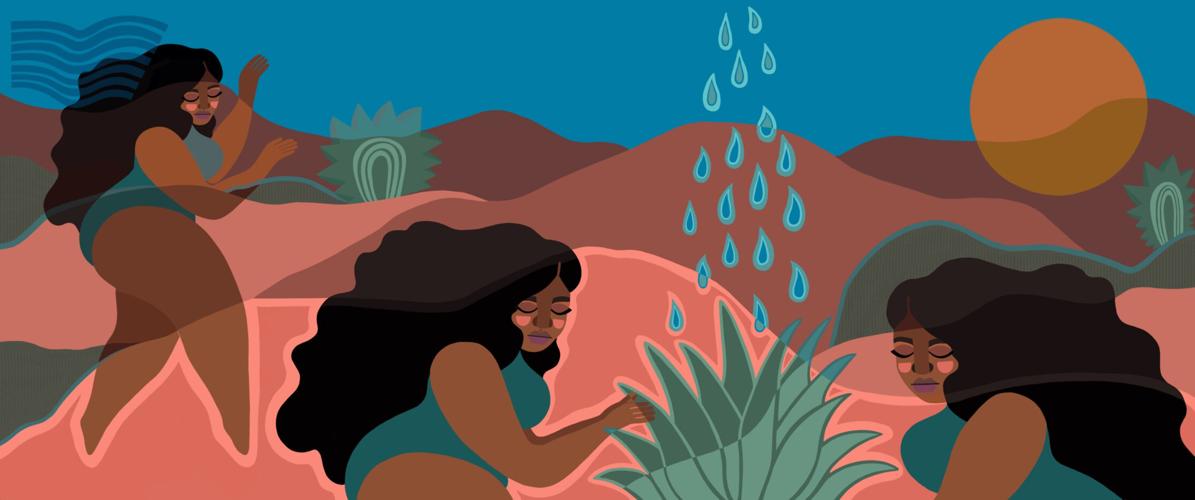


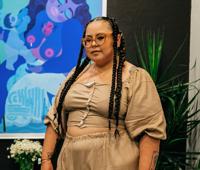

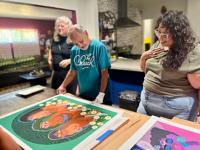

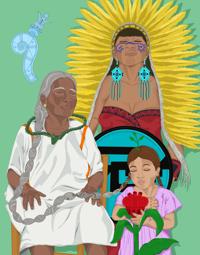
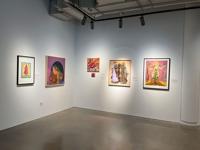

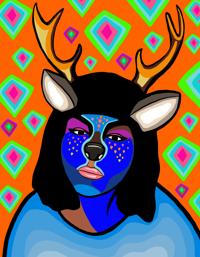

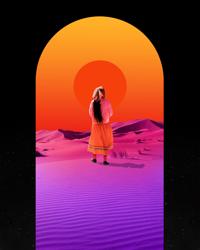

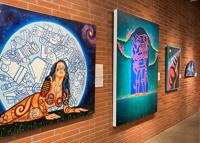



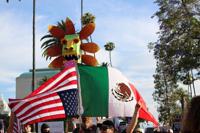

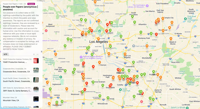

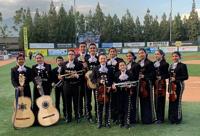
(0) comments
Welcome to the discussion.
Log In
Keep it Clean. Please avoid obscene, vulgar, lewd, racist or sexually-oriented language.
PLEASE TURN OFF YOUR CAPS LOCK.
Don't Threaten. Threats of harming another person will not be tolerated.
Be Truthful. Don't knowingly lie about anyone or anything.
Be Nice. No racism, sexism or any sort of -ism that is degrading to another person.
Be Proactive. Use the 'Report' link on each comment to let us know of abusive posts.
Share with Us. We'd love to hear eyewitness accounts, the history behind an article.